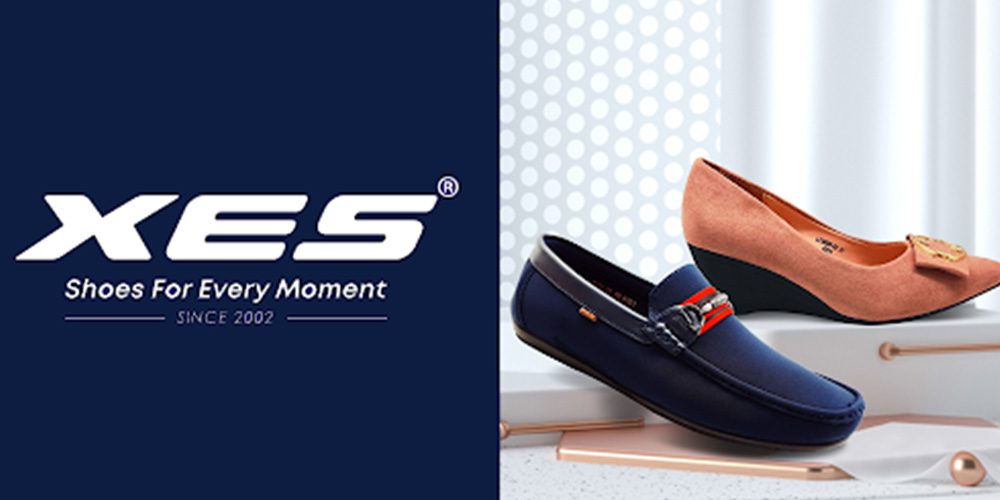Shoes are part of our everyday life, be it for work, exercising, or daily recreational purposes. In fact, the average person spends up to 8 to 10 hours wearing shoes on any given day, if not more. But why is it that despite having multiple pairs, we tend to have favourites and gravitate to them more frequently than we do others? The answer - comfort.

A comfortable pair of shoes doesn’t depend solely on a single element, rather it is a combination of several essential yet often overlooked factors. Material, breathability, and support - are all important aspects to consider when choosing footwear, and are part of my core philosophy throughout the past 20 years of running XES Shoes.
Similar to picking our clothes, we tend to choose materials that are most comfortable (and make us look good). There are many materials that designers and manufacturers tend to gravitate to, such as leather, canvas, polyurethane (PU), thermoplastic polyurethane (TPU), and more. While there is no such thing as “best material”, one has to make their decision based on their lifestyle and usage. A pair of leather shoes look great with a suit and tie but does not help score goals in a football match, and vice versa.
One interesting piece of trivia that I’ve learned very early on is that our feet tend to widen and contract throughout the day depending on the temperature, which should also be a point to consider when choosing footwear. Materials that are softer tend to adhere better to the changes in size of our feet, hence giving us a more comfortable fit - this is also why walking in shoes made with more rigid materials on a hot sunny day tends to get tiring faster.
Our feet, like other parts of our body, produce sweat, which is a common trait in shoes made with active and athletic lifestyles in mind. Without proper breathability, one might accumulate sweat inside the shoe, which can lead to fungal or bacterial infections such as athlete’s foot, blisters, and more.
Last but definitely not least - support. A pair of shoes without proper support could worsen existing foot conditions. The soles are the most common part of the shoes when discussing support. The toebox - the part of the shoe in which we rest our toes in - should be fairly easy to bend, as it is a point of articulation, whereas the midsole should be fairly stiff to permit subtle changes when we take steps. This is a common yet highly welcome element in sports shoes. A simple method to test this out is by bending your current shoes, if it bends easily in the front yet the middle part stays fairly rigid, I’d say it checks one of the most crucial elements of a good shoe.
The above points, while seemingly simple and straightforward, could lead to many short and long term benefits. The last thing one would want after a tiring workday is for their feet to hurt throughout the night because of poor design choices. Given the arduous task of absorbing approximately 120% of our body’s weight with each step, and more than double that when we run, choosing a pair of shoes that are not only comfortable to wear, but also provide the proper support should always be a priority. Failing to do so will often lead to injuries and foot ailments that may haunt you later in life!
With that said, it is no surprise that shoes play a huge role in a person’s posture. They provide the support required for us to stand, walk, and run properly (and effortlessly, when designed right). Without the correct design choices, they might worsen our posture and contribute to long-term damage. This is why wearing high heels for long periods of time, especially in adolescents, could lead to postural disorders such as excessive curvature of the lower back, forward-tilted pelvis, forward head posture, and more. The shift in weight compared to when one is barefoot (or wearing flats) affects the whole body as individual parts compensate for the change in weight distribution.
As past research has proven, wearing the wrong shoes will result in issues such as soreness, calluses, and blisters, all of which will affect performance and general mood. Not only that, but physical activities might also place stress on our joints and could lead to excessive pressure and injuries. While many cobblers might shoehorn unnecessarily complex designs that could negatively affect the wearer at the cost of aesthetics, I put comfort above all else. If a pair of shoes are not comfortable to put on, we will either go back to the drawing board or decide not to release it altogether.
That said, if you still require help choosing the right shoes based on your foot type, don’t hesitate to talk with a healthcare professional, such as a podiatrist or physiotherapist to determine the best fit for you. As mentioned before, everyone has different requirements based on their bodies and personal preferences, and having professional help will allow for smarter and better choices.
At the end of the day, regardless of the occasion, a pair of shoes is meant to complement your outfit, activity, and work-life. They are there to make sure that your feet, and by extension, your whole body is well maintained and protected. Hence, it is always a good idea to go the extra mile while choosing the perfect shoes for yourself. Make the right choice and your shoes will support you along the way, even when you’re on your last leg.


